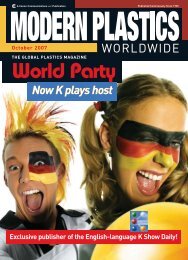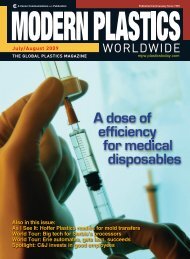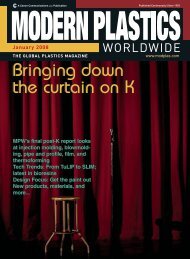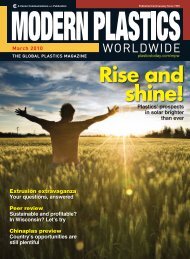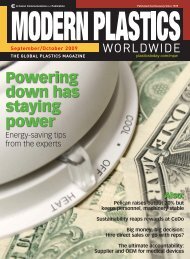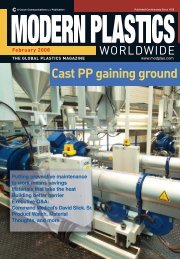amidiq - dae uptlax
amidiq - dae uptlax
amidiq - dae uptlax
Create successful ePaper yourself
Turn your PDF publications into a flip-book with our unique Google optimized e-Paper software.
REVISTA MEXICANA DE INGENIERÍA QUÍMICA Vol. 6, No. 3 (2007) 301-308 AMIDIQ<br />
AMMONIA AND NITRITE REMOVAL RATES IN A CLOSED<br />
RECIRCULATING-WATER SYSTEM, UNDER THREE LOAD RATES<br />
OF RAINBOW TROUT Oncorhynchus mykiss<br />
TASAS DE REMOCIÓN DE AMONIACO Y NITRITO EN UN SISTEMA CERRADO<br />
DE RECIRCULACIÓN DE AGUA, BAJO TRES CARGAS<br />
DE TRUCHA ARCO IRIS Oncorhynchus mykiss<br />
J. L. Arredondo-Figueroa 1* , G. Ingle de la Mora 2 , I. Guerrero-Legarreta 3 ,<br />
J. T. Ponce-Palafox 4 and I. de los A. Barriga-Sosa 1<br />
1,3 Planta Experimental de Producción Acuícola, Departamento de Hidrobiología, y Departamento de<br />
Biotecnología, CBS, Universidad Autónoma Metropolitana-Iztapalapa, Mexico.<br />
Av. Michoacán y La Purísima s/n, Col. Vicentina, Iztapalapa. Apartado Postal 55-535, México 09340 D.F.<br />
2 Instituto Nacional de la Pesca, Secretaría de Agricultura, Recursos Hidráulicos, Pesca y Alimentación<br />
(SEMARNAP), México, D.F. Pitágoras 1320, Colonia Santa Cruz Atoyac, Mexico 03310, D.F., Mexico.<br />
4 Laboratorio de Bioingeniería Acuícola, Centro de Investigaciones Biológicas, Universidad Autónoma del Estado<br />
de Morelos, Apartado Postal 584, Ciudad Universitaria, Cuernavaca 62001, Cuernavaca Morelos, Mexico.<br />
Abstract<br />
* Corresponding author: E-mail: afjl@xanum.uam.mx<br />
Phone (55) 58046585. Fax: (55) 58044737<br />
Received 9 th February 2007; Accepted 20 th November 2007<br />
Nitrification and denitrification rates of inorganic nitrogen were studied in a closed recirculating-water system,<br />
comparing three load rates of rainbow trout Oncorhynchus mykiss (89, 156 and 194 kg in each tank with two<br />
repetitions). Six self-cleaning water circular fish tanks with a volume of 4.3 m 3 were used, maintaining a 3.94<br />
m 3 /day of average flow rate and constant aeration. A total of 371 rainbow trout, 524 ± 8 g initial wet weight were<br />
introduced in the system and fed with a commercial feed that contained 38% of protein. A total study time of 44<br />
days was divided into three phases of 14, 17 and 13 days according to the load fish rate. Temperature, dissolved<br />
oxygen, pH, total ammonia nitrogen (TAN), un-ionized ammonia, nitrite and nitrate were daily evaluated at four<br />
monitoring sites: fish tank (FT), settling tank (ST), biofilter (B) and reconditioning tank (RT). Water<br />
physicochemical characteristics and their fluctuations played an important role in treatment efficiency. Water<br />
temperature varied between 18 °C and 20.5 °C and dissolved oxygen from 4.6 to 7.7 mg/l. The lowest values of<br />
these two variables were registered in the ST where all wastes accumulate. No significant differences (p ≤ 0.05)<br />
were observed in pH values (8.3-8.6). These conditions allowed good nitrification and denitrification rates. TAN<br />
varied from 0.2 to 1.96 mg/l; however, this value was 80% lower in the outlet (RT) as compared to the inlet (ST).<br />
The load fish rate caused a significant difference (p ≤ 0.05) in TAN and non-ionized ammonia in the FT with the<br />
lowest value for 89 kg load density as compared to 156 and 194 kg respectively. Conversely, nitrite concentration<br />
did not show a significant difference (p ≥ 0.05) among load fish rate. Nitrate concentration had an accumulative<br />
tendency at 156 kg load rate batch up to 30 days with a further decrease. The results showed that a reduction of<br />
load rate did not change apparently the equilibrium of bacteria population. Therefore, it is possible to control<br />
variables such as TAN, non-ionized ammonia and nitrite concentration, hence maintaining an adequate water<br />
quality for rainbow trout.<br />
Keywords: closed recirculating system, denitrification, load density, nitrification rate, rainbow trout.<br />
Resumen<br />
Se estudiaron las tasas de nitrificación y desnitrificación del nitrógeno inorgánico, en un sistema cerrado de<br />
recirculación de agua, comparando tres cargas de biomasa de trucha arco iris Oncorhynchus mykiss (89, 156 y 194<br />
kg por estanque con dos repeticiones). Se utilizaron seis estanques circulares de autolimpieza con volumen de 4.3<br />
m 3 de volumen, con un flujo promedio diario total de agua de 10.93 m 3 y aireación constante. Un total de 371<br />
truchas arco iris con peso inicial de 524 ± 8 g fueron introducidas en el sistema y alimentadas con alimento<br />
balanceado, que contenía 38% de proteína. El estudio duró 44 días continuos, divididos en tres fases de 14, 17 y 13<br />
días respectivamente, de acuerdo con la carga de biomasa de peces. La temperatura, oxígeno disuelto, pH,<br />
nitrógeno amoniacal total (NAT), amoniaco, nitrito y nitrato fueron evaluados diariamente en cuatro sitios de<br />
monitoreo: estanque de peces (EP), estanque de sedimentación (ES), biofiltro I (BI) y estanque de<br />
Publicado por la Academia Mexicana de Investigación y Docencia en Ingeniería Química A.C.<br />
301



